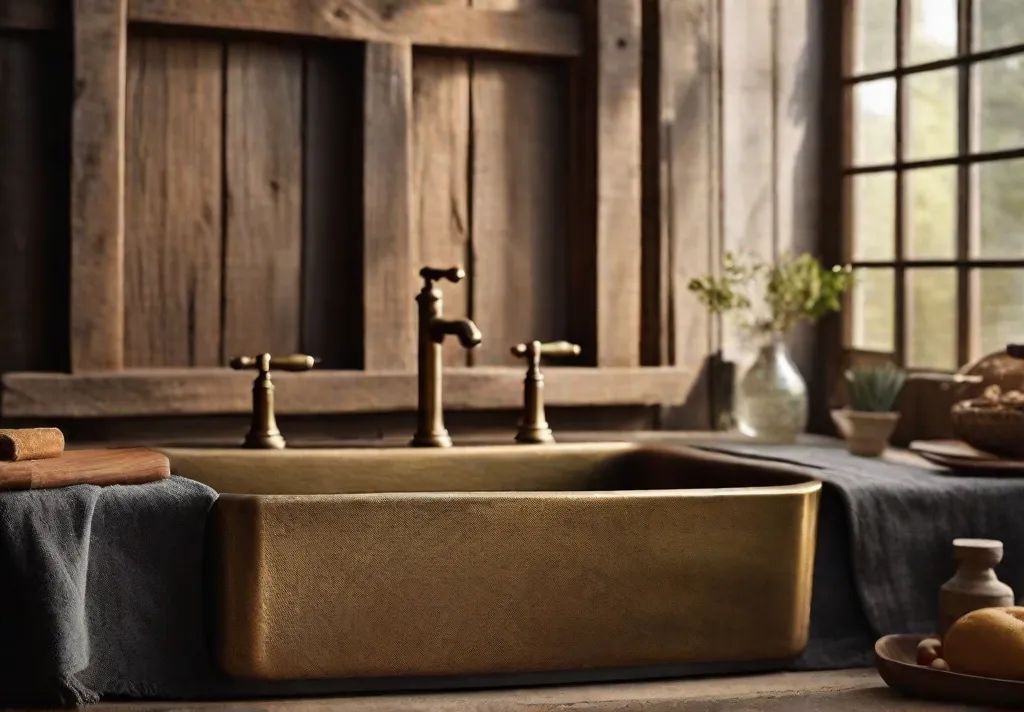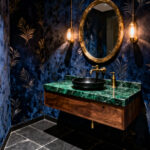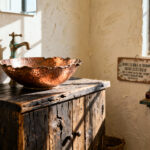Rustic kitchen designs have a timeless appeal that connects us to simpler times filled with warmth, comfort, and natural beauty. As Los Angeles designer Jackson, specializing in sustainable landscapes and eclectic home decor, notes, “Rustic kitchens exude warmth, authenticity and a welcoming ambiance.” This enduring style, rooted in natural materials and textures, creates a cozy retreat for gathering, cooking, and creating memories that last for generations.
Characteristics of Rustic Kitchens
Rustic kitchens are defined by specific unchanging characteristics that cross decades and design trends:
- Natural Materials: Weathered wood, rough-hewn stone, exposed brick, and timeworn metals form the foundation of the rustic style. These raw, organic textures blend our living spaces with the beauty of nature.
- Earthy Tones: Subdued brown, green, gray, and terracotta hues keep rustic spaces grounded and peaceful. Pops of color liven the palette through dishware, textiles, and artwork.
- Imperfect Finishes: Distressed woods, handmade tiles, and hammered metals embrace the marks of craftsmanship over mass production. Each dent, stain, and irregularity adds character.
- Personal History: Family heirlooms, antique finds, and handcrafted details infuse rustic homes with unique heritage. Each nick and scratch tells a story.
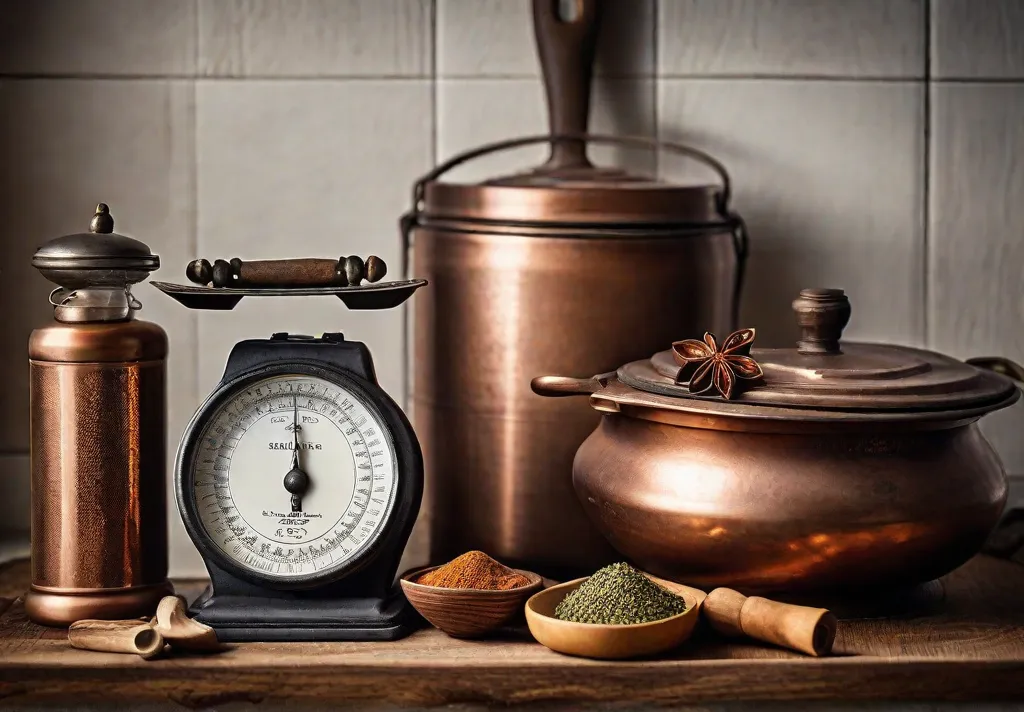
The following time-tested elements can help you perfectly balance timeworn and contemporary rustic styles.
Reclaimed Wood Accents
Wood reclaimed from old barns, factories, and homes brings aged charm and sustainability. Knots, stains, and carvings add texture and personality to kitchen cabinets, shelves, and ceilings.
Popular uses for reclaimed wood include:
- Shelving
- Kitchen island
- Ceiling beams
- Cabinetry
- Tabletops
When sourcing reclaimed wood, look for:
- Interesting details like dovetail joints or engraving
- Tight grain for furniture-grade boards
- Salvaged wood that allows you to repurpose materials from old buildings

Use reclaimed wood to create custom details like an accent wall, butcher block countertops, or a backsplash for a one-of-a-kind touch.
Natural Stone Elements
Layers of quartz, mica, and feldspar compressed over millennia yield stunning countertops and surfaces that improve with age. Granite, marble, travertine, and soapstone each add unique visual texture.
Incorporate natural stone through:
- Countertops
- Backsplashes
- Floors
- Exposed stone wall
- Fireplace surround
Study your options to determine which stone suits your needs:
- Granite: Tough and heat-resistant
- Marble: Elegant veining with lower heat tolerance
- Travertine: Earthy, porous and needs regular sealing
- Soapstone: Soft but stain-resistant, develops a patina over time
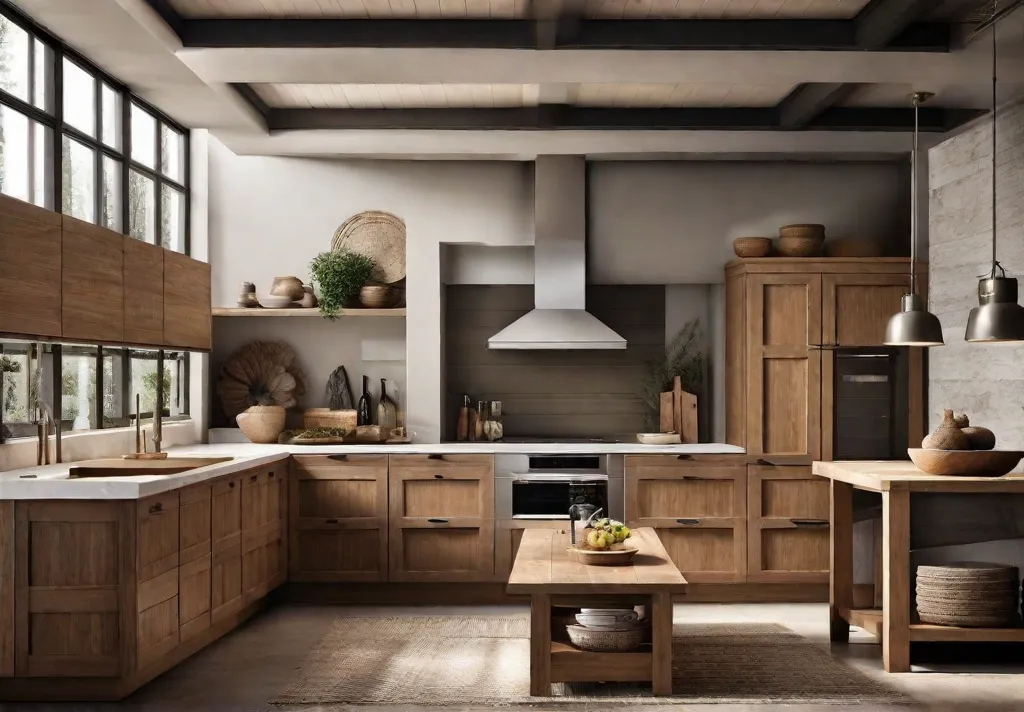
Balance stone with wood accents and greenery to prevent a cold, cave-like feeling.
Farmhouse Sinks
Deep and wide farmhouse sinks hold their appeal through generations with a versatile apron-front design. Stainless steel and fireclay materials withstand heavy use.
Key features include:
- Apron front
- Deep single basin
- Materials like fireclay or stainless steel
- Optional drainboards
Before installation, address critical considerations:
- Farmhouse sinks require custom cabinetry for the apron front to fit correctly.
- Check that measurements accommodate existing plumbing and counter height.
- Seal the edges to prevent moisture damage.
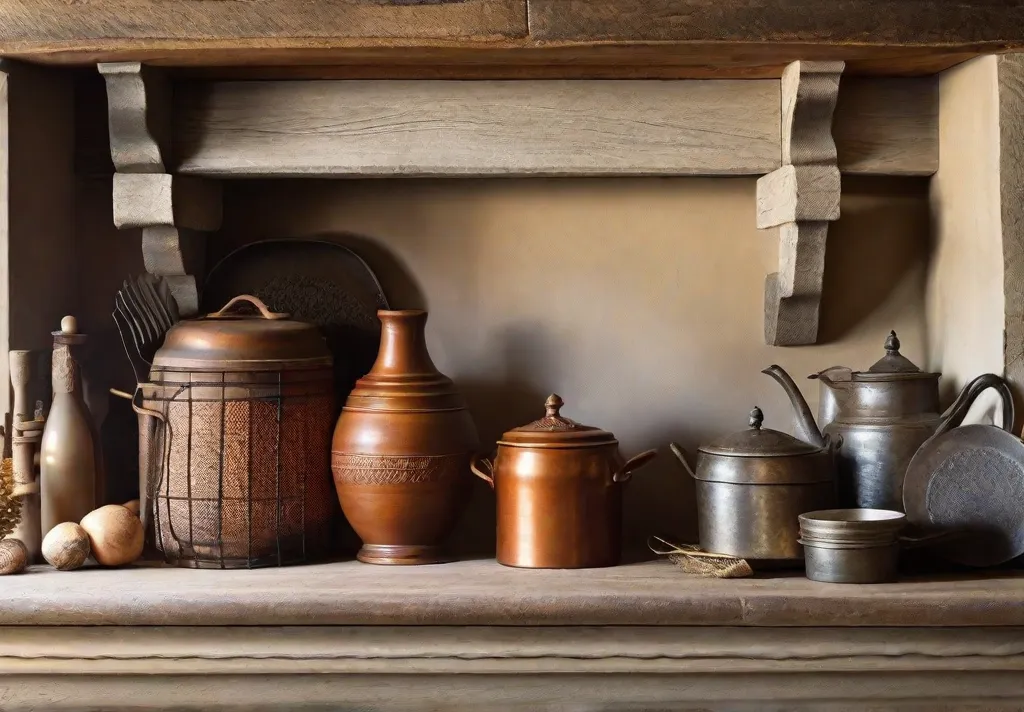
Bridge old and new with modern faucets and accessories featuring clean lines and finishes like matte black or brushed gold.
Rustic Pendant Lighting
The proper lighting casts a warm glow over rustic spaces. Iron fixtures, exposed bulb pendants, and woven lampshades pair nicely with the reclaimed woods and natural stone.
Rustic lighting options:
- Woven shades
- Exposed bulb pendants
- Wrought iron/steel
- Antler chandeliers
- Copper detailing
- Edison bulbs
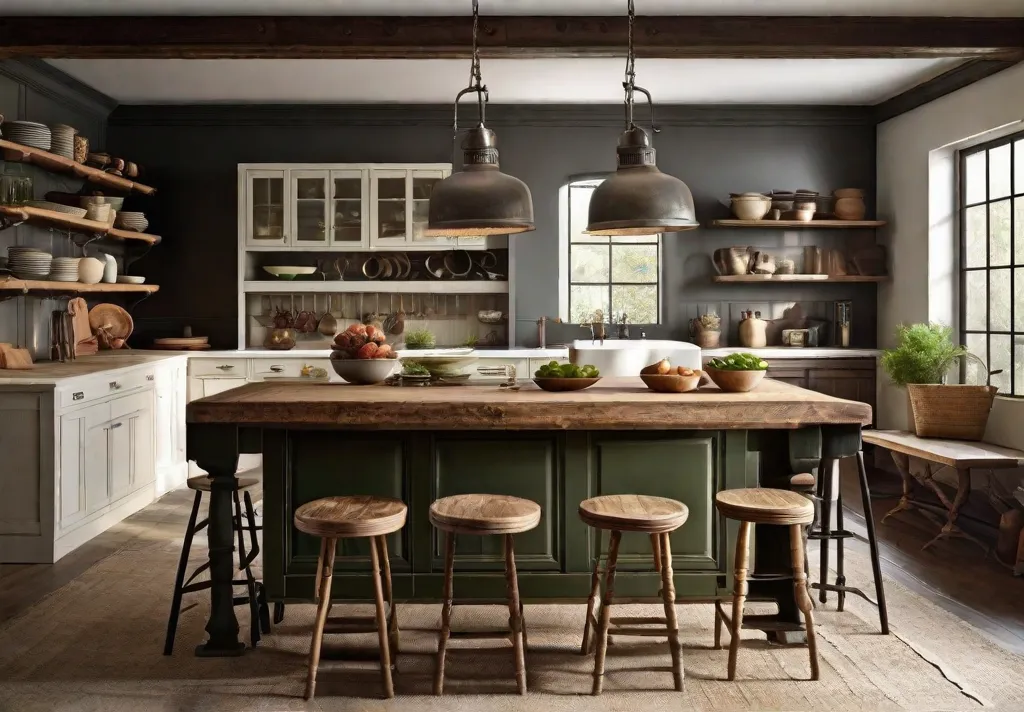
When planning your lighting:
- Layer ambient, task, and accent lighting. Rustic pendants work nicely over islands and dining tables.
- Opt for dimmable fixtures to set the right mood.
Open Shelving
The rustic aesthetic extends to storage with open shelves displaying collections of heirloom dishware or rows of preserved fruits and vegetables. Iron pot racks hang heavy pans within easy reach.
Open storage offers:
- Quick access to everyday items
- Space to spotlight favorite pieces
- A place to grow herb gardens or potted plants
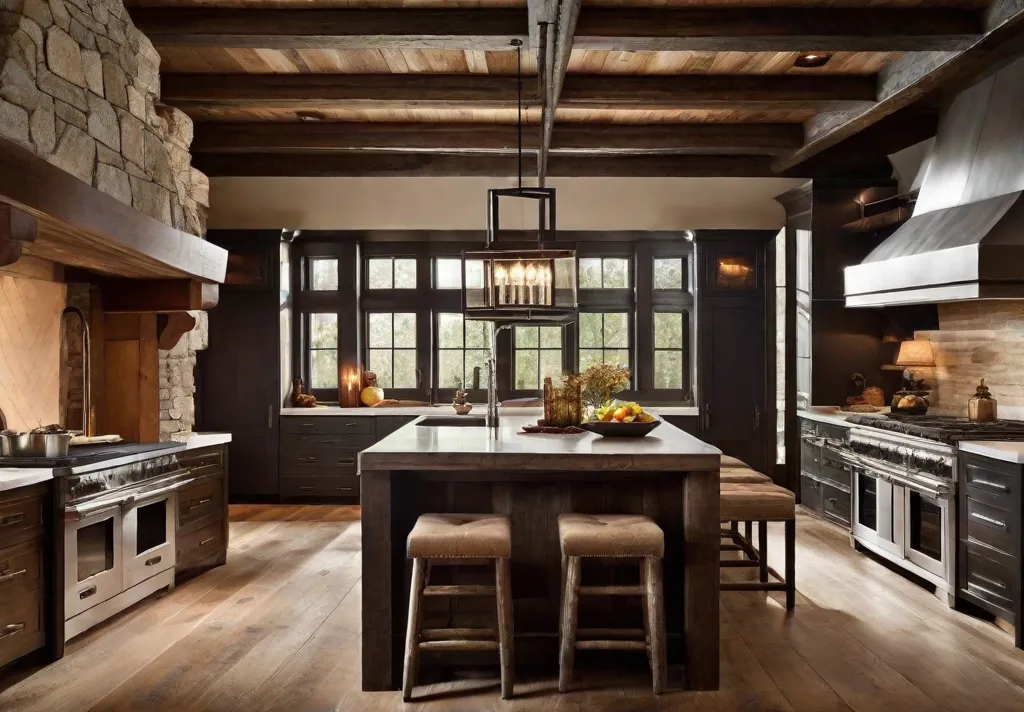
Maximize form and function:
- Edit down to the essentials so the shelves feel clear.
- Group items, like stacks of plates or mugs hanging from hooks
- Regularly rotate fragile items to prevent dust buildup.
Neutral Color Palettes
While rustic spaces feature plenty of natural textures, the color palette tends to be understated. Earth tones, whites, and muted hues establish a tranquil backdrop. Pops of color can be introduced through dishware, textiles, and artwork.
Popular rustic color combinations:
- Cream + wood tones
- Beige + black accents
- Gray washed wood
- Off-white + brick-red
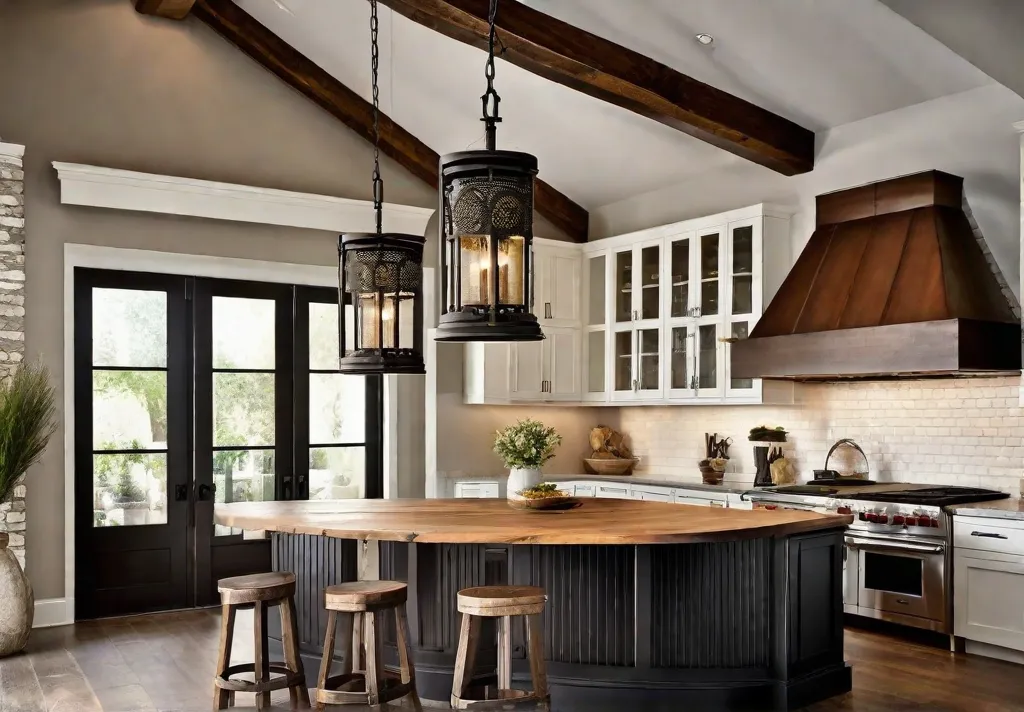
Consider finishes and sheens:
- Eggshell or matte paint avoids overly reflective surfaces
- Stained wood in natural, weathered, or whitewashed finishes
- Distressed paint mimics timeworn surfaces
Timeworn Metals
The copper and cast iron patina accentuate the rustic decor’s worn-in charm. Copper instantly warms a space, picking up surrounding colors. Traditional cast iron cooking vessels display the marks of generations of use.
Ways to include metal elements:
- Hammered copper sinks
- Cast iron skillets on open shelves
- Wrought iron light fixtures
- Copper barstools
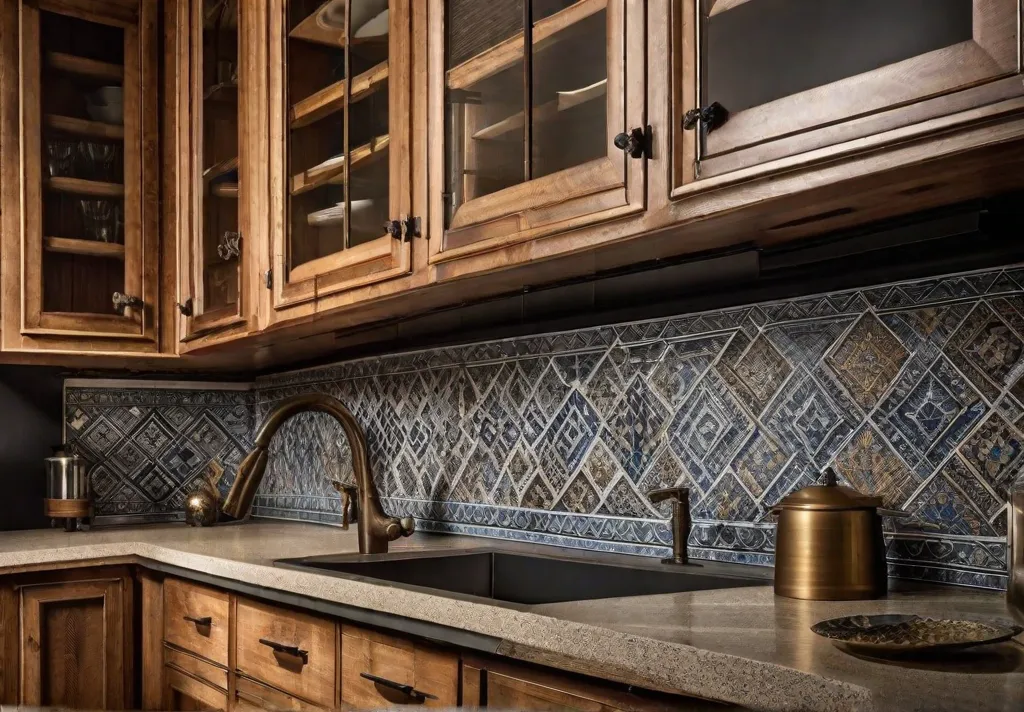
Care for these metals with:
- Gentle copper cleaners like lemon and salt
- Regular cast iron seasoning
Blend seamlessly with modern appliances featuring copper or iron accents.
Handcrafted Tile
Handmade ceramic or porcelain tiles lend rustic kitchens and baths an artisanal feel with slight irregularities that mass-produced tiles lack. Glazes, patterns, and textures like hand-painted motifs or a weathered surface enhance the custom look.
Display tiles on:
- Backsplashes
- Accent walls
- Floors
- Countertops
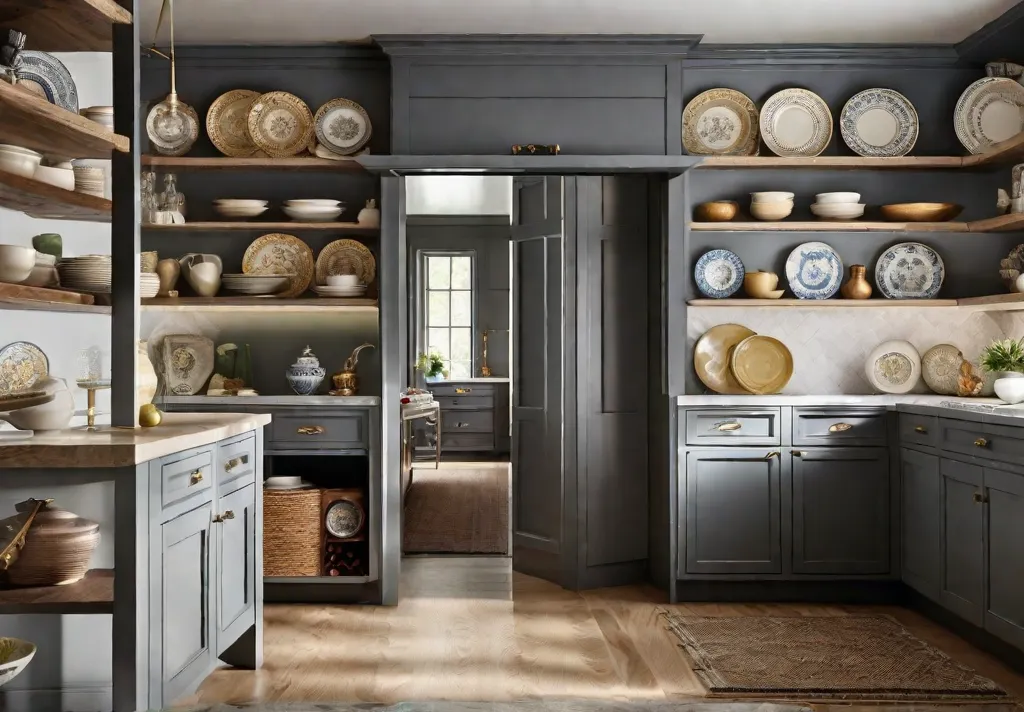
During installation:
- Use tile spacers for even grout lines
- Thoroughly seal grout lines
- Consider having tiles professionally installed
Pair tiles with additional handcrafted touches like wrought iron fixtures or carved wood detailing.
Repurposed Furniture
Give antique furniture new life as rustic kitchen storage and surfaces. Sideboards become kitchen islands. Armoires house dishware. Salvaged beams or barn wood panel walls and ceilings.
Ideas for repurposed furniture:
- Island from antique cabinet or dresser
- Vintage cabinetry for storage
- Salvaged architectural beams
- Antique table as kitchen island
To modernize antique pieces:
- Sand and restain wood to freshen up the color
- Replace missing hardware with new pulls or hinges
- Add a sink or appliances to furniture, converting it into an island

Mix with contemporary metals, clean lines, and modern artwork for an eclectic feel.
Potted Herbs & Plants
Self-grown herbs bring fresh flavors while contributing greenery. Succulents, orchids, or potted olive and lemon trees make excellent rustic accents.
Some rustic greenery ideas:
- Herb garden in galvanized buckets
- Air plants in hanging terrariums
- Olive tree topping a kitchen island
- Succulents along a windowsill
When selecting plants:
- Seek out low-maintenance, low-light varieties
- Choose plants with rustic appeal, like trailing ivy or rosemary
- Consider citrus trees for fruit and visually attractive leaves
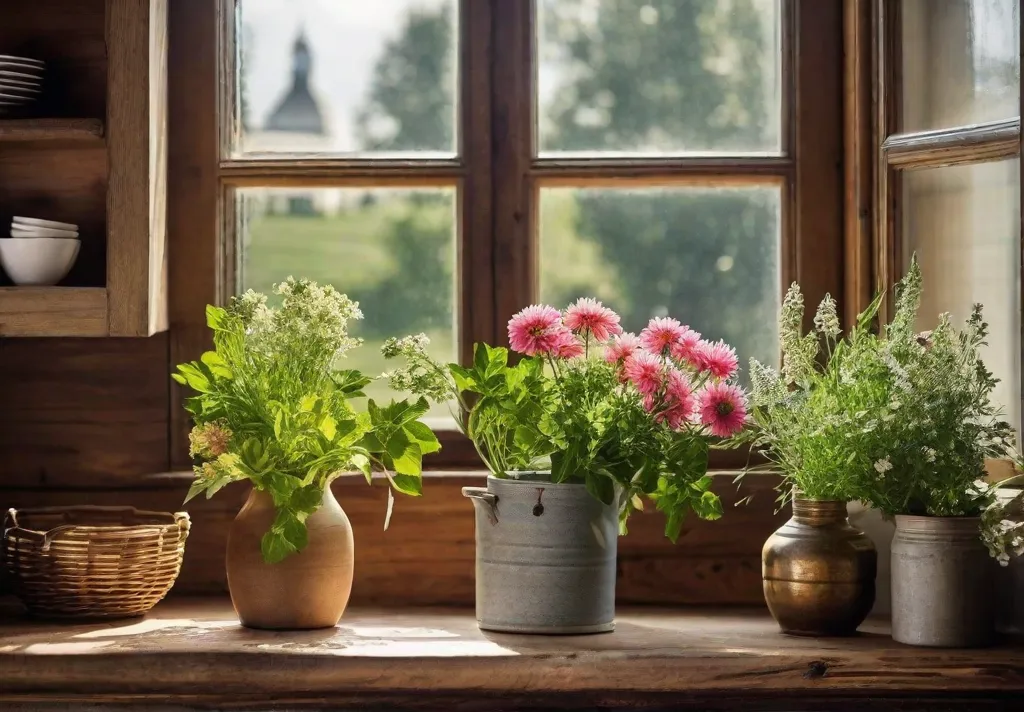
Personal & Family Touches
Rustic style welcomes personal artifacts, family heirlooms, and handcrafted goods that make the space feel uniquely yours.
Personalize your rustic kitchen with the following:
- Family china or silverware on display
- Framed photos on open shelving
- Children’s artwork on the refrigerator
- Handmade ceramic mugs with family member’s names
When displaying special items:
- Spotlight mementos in wall niches, corner shelves, or on top of cabinets.
- Rotate fragile heirlooms with other decorative items to prevent overexposure.
- Attach kids’ artwork to the fridge or tile the backsplash with custom tiles.
The beauty of rustic design lies in its flexibility to reflect personal style through beloved objects with history and happy memories.

Key Takeaways
- Rustic kitchens use reclaimed wood, natural stone, and timeworn metals to create a welcoming, grounded feel.
- Touches like exposed beams, farmhouse sinks, woven light fixtures, and open shelving embrace function and aesthetics.
- Neutral, earthy color palettes allow the textures and materials to shine.
- Personal artifacts and family heirlooms infuse rustic spaces with memories and meaning.
- The rustic design seamlessly blends old and new elements for spaces that improve with age.
The enduring magic of rustic style comes from its harmony of textures, focus on craftsmanship, and connection to nature. By thoughtfully combining reclaimed wood, stone, and metals alongside meaningful personal touches, you create a peaceful, welcoming kitchen that tells the unique story of its inhabitants.
Frequently Asked Questions
What are some budget-friendly ways to get a rustic look?
Some lower-cost options include using faux wood paneling instead of reclaimed boards, picking affordable materials like pine wood furniture or travertine tile, and purchasing secondhand lighting fixtures, cabinets, and sinks from salvage shops or online classifieds instead of buying new.
How do I give my existing kitchen cabinets a rustic feel?
Try sanding cabinets down and applying a natural wood stain or whitewashing paint technique to distress them. Switch out existing hardware for wrought iron pulls. Add open shelving above cabinets to display glassware and cookbooks.
What kind of countertops work best for rustic kitchens?
Butcher block, reclaimed wood, concrete, and natural stone surfaces like granite and soapstone all pair nicely with the rustic design style. Materials like quartz can also work well if selected in earthy finishes.
Can I mix rustic elements with modern appliances?
Definitely! Blend modern conveniences like stainless steel appliances into your rustic design using neutral colors. Or select appliances with metal finishes like copper or gunmetal that feel modern and timeworn. Lean into the contrast through your cabinetry mix and styling.
